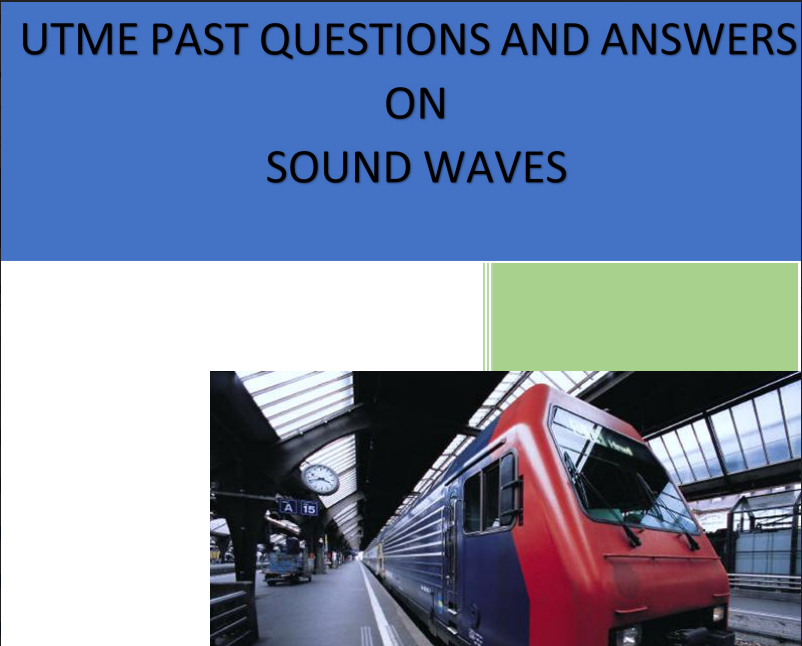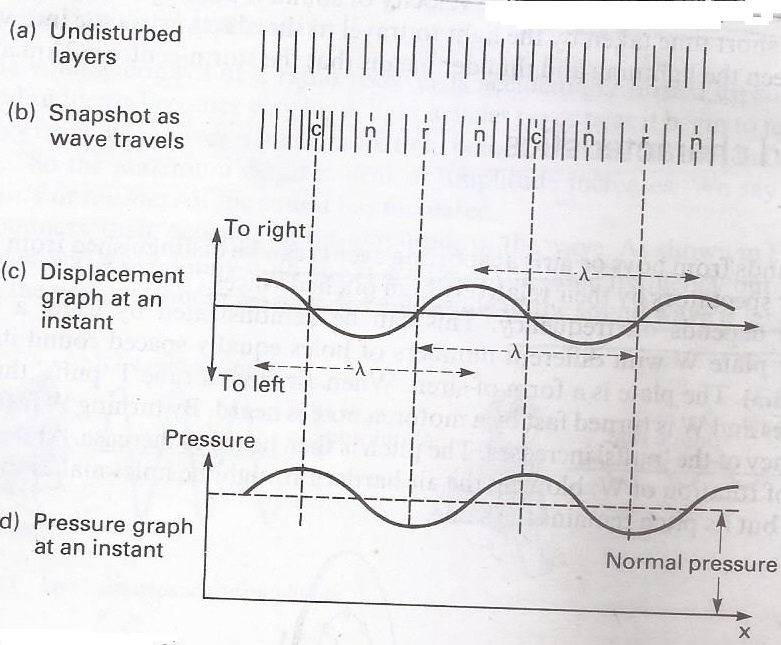
Free Download of Jamb (UTME) Physics past questions with Answers on 'Sound waves.'
There have been lots of posts out there stating 'Free Download of UTME Physics past questions with Answers' but only questions without answers. This has prompted me to painstakingly create this pack by solving Jamb physics past questions on different topics and making them available to download for free. Not only are these questions solved topics by topics, they're also solved systematically from the simplest to the hardest. It is a unique past questions pack with answers to make easy studying of the subject.Side Note: 'ume 91@04' in the pack implies ume 1991 question number 4.
As the description of the website displays-understanding what you know is the key- I would like to explain briefly on this topic.
Brief explanation on the topic
Sound waves and matter
Sound waves travels through gases, liquids and solids. When a train approaches a station, the rail can be heard vibrating before the train comes into view. The metal of the rail carries the sound, which is then transmitted to our ears through the air.
How sound waves travel
Sound waves are carried through air by the displacements of air particles.
The figure above (a) shows the undisturbed layers of air. The (b) shows their displacements at a particular instant when sound passes through the air if we could 'freeze' the wave. The (c) shows the wave pattern when we plot the displacements at the different places- a displacement to the right is positive and to the left is negative. This pattern changes as the wave travels. Since the vibrations of the air are in the same direction as the wave, a sound wave is a longitudinal wave. When the layers of air are more crowded together at a particular place, as at c in fig (b), the air pressure is above normal. We call this a compression. When the layers are less crowded, as at r in fig (b), the air pressure is below normal. This is called a rarefaction. Compressions and rarefactions in sound waves are detected by the carbon microphone in a telephone.
Sound characteristics
Pitch
This is the position of sound in a musical scale. It depends on frequency. It differentiates sounds from young and old people.
Loudness and intensity
If the volume control of a radio receiver is accidentally turned up so that the sound suddenly becomes very loud, light articles on or near it begin to jump. The energy from the receiver is much more than before, and this disturbs the air layers more. So the amplitude increases. We say that the intensity or loudness of the sound has increased. Loudness, then depends on the amplitude of the wave. Generally, the greater the mass of air which can be set into vibration the louder will be the sound.
Quality or tone (timbre)
A well-made tuning-fork can produce a 'pure note', that is, one with a single frequency. A musical instrument such as piano or guitar never produces a note of a single frequency. In addition to the main frequency, overtones of higher frequency may be present. This is due to the characteristics waveform of the note produced by an instrument. Though the overtones quieter than the main frequency, the different overtones produced by different instruments provide a 'background' which helps us to distinguish between the same note played on a violin and a piano, for example. The quality or timbre of a note, then depends on the overtones or waveform of the note.
Download by clicking here


Comments
Post a Comment